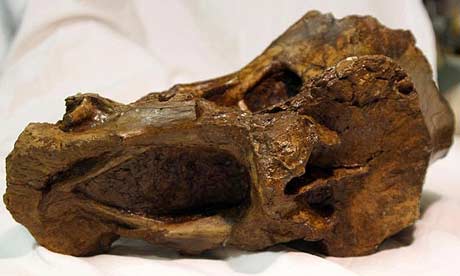I found this interesting post on Marie Stopes the mother of the British and Canadian birth control/planned parenthood movements.
Shh don't tell the Conservatives this is on the governments Natural Resources site or it might disappear.
Of course being a paleontologist she would be well steeled for dealing with controversy from the religious right. In todays world her profession as a paleontologist would give her a leg up on confronting the paleo-conservatives.Marie Stopes: paleobotanist at St. John
It is not often that the Geological Survey of Canada considers it necessary to hire a foreign expert to adjudicate a local paleontological matter. In 1911 Marie Stopes was brought in as a hired gun to check the paleobotanical work of Sir William Dawson in St. John, New Brunswick

Marie Stopes, in a romantic pose looking like the Lady of Shalott, aged 30, about the time she worked on the Fern Ledges fossils.
(From Ruth Hall's book - Passionate Crusader: The Life of Marie Stopes.) |
In 1940, a Mr. J.F. Coates, M.P. from New South Wales gave a speech in the Australian Parliament that included this statement: "The Empire today has three enemies -- all from Munich. One is Hitler, the other Goebbels, and the third that doctor of German philosophy and science -- Dr. Marie Stopes. The greatest of these is Marie Stopes". Why such enmity? Her German doctorate was in the field of paleobotany -- not usually a field that provokes vitriolic hate. But Stopes was also the author of the first sex manuals, Married Love and Wise Parenthood, and an active promoter of birth control who established Britain's first family planning clinics in 1921. The Marie Stopes International now provides reproductive health services in over thirty countries and, in 1999, she came first in the Guardian's "Women of the Millennium" poll.
But our interest here is not primarily with Marie Stopes, the birth control promoter; it is with Marie Stopes, the paleobotanist, who in 1911 was hired by the Geological Survey of Canada to settle a vexing controversy about the age of plant fossils at "Fern Ledges" near St. John, New Brunswick. With a Ph.D from Munich and a D.Sc. from London, this 30-year-old lecturer in botany at the University of Manchester, and the author of Ancient Plants, was well qualified for this task.
Find blog posts, photos, events and more off-site about:
Canada, Marie Stopes, birth control, paleobotanist, paleontology, fossils,
 I smell the blood of a Tricertops......Or we could say this was as obvious as the nose on his face...after all with a snout like that why is this a surprize?!
I smell the blood of a Tricertops......Or we could say this was as obvious as the nose on his face...after all with a snout like that why is this a surprize?!












